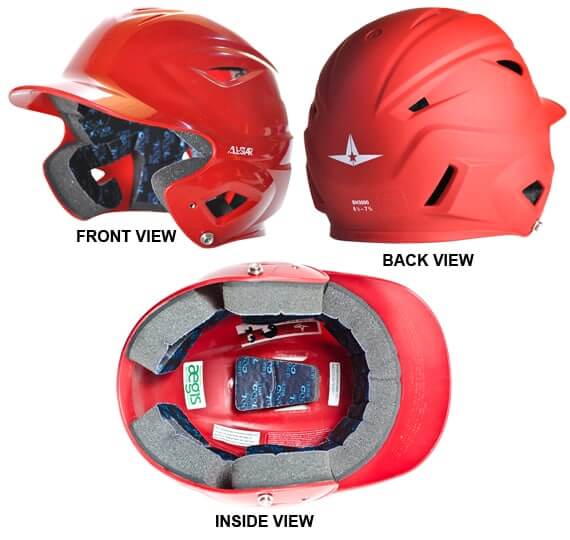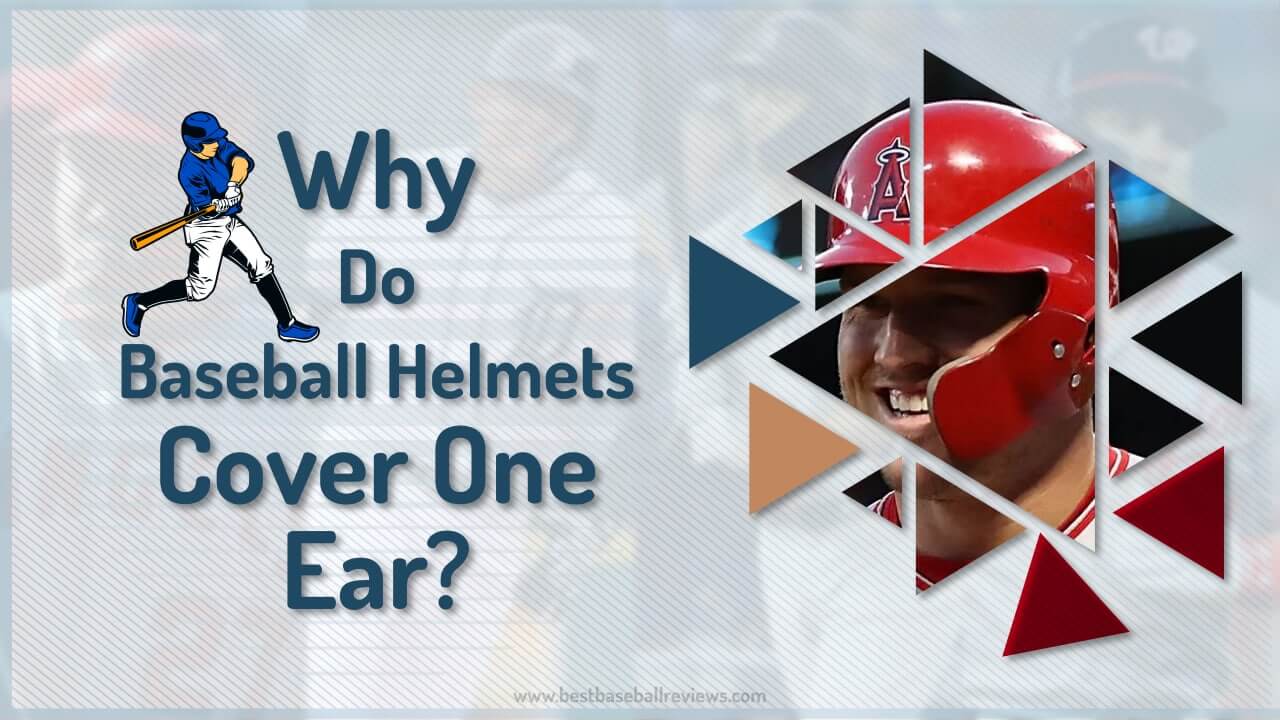The batting helmets that are so distinctive to baseball players help to identify them. However, they only cover one ear, a small fact you might not be aware of. Why? Let’s investigate! Baseball helmets cover one ear for a variety of reasons. One reason is to protect the ear from being hit by a pitch or batted ball. Another risk is the danger of hearing damage due to the loud noise of the crowd and the players on the field.
Table of Contents
Why do baseball helmets cover one ear?
Baseball helmets have been used for more than a century, and during that period, they have seen significant change. Baseball helmets are now made for concussion prevention, among other injuries. The fact that a modern baseball helmet covers one ear is among its most crucial characteristics. Although it might appear like a weird design choice, it has a significant function.

The ear that the helmet covers is the one that is most susceptible to damage. The brain may ricochet off the skull when a player receives a blow to the head. This may result in a concussion or a severe brain injury. The helmet helps shield the brain from this damage by covering the ear.
For a few reasons, the opposite ear is not covered. It first enables players to hear their teammates and the audience. This is crucial for on-field communication. Additionally, it allows players to hear the bat’s crack. This is crucial because it will enable them to respond swiftly to a ball headed their way.
The helmet protects the head quite well, but it is not faultless. When participating in any sport, there is a chance of injury. However, by donning a helmet, players can dramatically lower their risk of incurring a severe injury.
When did baseball players start wearing ear protection?

When baseball became more well known and organized in the late 1800s, some players began to wear ear protection. However, most baseball players wore no protective equipment in the sport’s early years. Players didn’t start donning gloves to protect their hands until the 1920s. Players began donning helmets to protect their heads in the 1930s. Before the 1970s, ear protection was infrequently utilized. Most athletes now use earplugs or other types of ear protection to protect their ears from harm.
NOCSAE standards baseball helmets
If you enjoy baseball, you should make sure your helmet is NOCSAE-approved. The National Operating Committee on Standards for Athletic Equipment, or NOCSAE, creates security requirements for sporting goods. Therefore, you should only wear helmets that have received NOCSAE approval since they adhere to the highest safety standards when playing baseball. In addition, your brain will be protected in the event of a hit if you wear a helmet that has received NOCSAE approval.
Wearing a helmet certified by the National Operating Committee on Standards for Athletic Equipment(NOCSAE) can help prevent head injuries, which can be pretty dangerous. Whether or not a ball is involved, wearing a helmet that has been certified by the NOCSAE can aid in protecting your brain in the event of an accident.
How to choose a batting helmet
Assuming you haven’t already purchased a helmet, here are a few recommendations on how to pick a batting helmet:
- Be sure the helmet is the right size. A good fit is vital for comfort and safety.
- Check that the helmet fulfills the requirements defined by the National Operating Committee on Standards for Athletic Equipment.
- Look for a helmet with a faceguard that is securely connected and provides decent visibility.
- Choose a helmet that is comfortable and that you can easily adjust.
- Make sure the helmet is well ventilated to help keep you cool.
- Check that the helmet is durable and that all parts are securely in place.
- Inspect the helmet often to make sure it is in good condition.
The process is remarkably similar to choosing the best baseball gloves under 100 or the best youth catchers gear.
Frequently Asked Questions(FAQs)
Multiple accounts go as far as 1940, when players or coaches, after being injured, were wearing baseball helmets covering one ear. However, we didn’t find definite proof of one player or coach who built the first helmet with an earflap in baseball. In 1940, White Sox’s second baseman Jackie Hayes made himself a helmet with an earflap after multiple injuries. Then, in 1964, Tony Gonzalez of the Phillies designed a helmet with a pre-molded earflap.
There is no set rule for how often or when you should replace your baseball helmet. When you see your helmet is damaged or dinged, you should replace it or repair it. But if you are still looking for an official answer, then NOCSAE has stated that any helmet older than ten years isn’t eligible for recertification, meaning it needs to be replaced.
The International Organization was the first professional baseball league to officially embrace the baseball helmet, doing so in 1939 when the list of necessary equipment began to include a “safety cap or helmet.” Buster Mills was the league’s first player to wear a helmet.
If you are looking for a standard batting helmet choice in baseball, look no further than Rawlings. Yet this is not an official rule since many players choose to wear helmets from other brands such as Wilson, Easton, Mizuno, or Louisville Slugger. So find the helmet that matches your preference and size so that you can be well protected and play safely.
Conclusion
One ear on a baseball player is covered by the helmet to protect them from pitches hitting that ear. Because the helmet would have dampened the sound, a fielder is more likely to catch it if a pitch strikes it and deflects downward.



